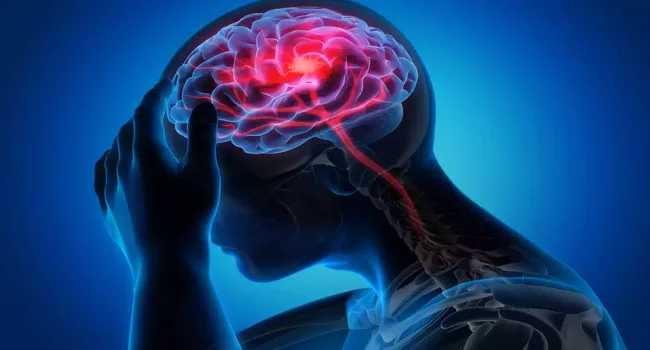Death is an inevitable part of life, and unfortunately, it affects us all in some way or another. In the United States, the Centers for Disease Control and Prevention (CDC) tracks the leading causes of death in the country. Here, we will discuss the top 10 leading causes of death in the United States from 10 to 1.
10- Kidney Disease
Deaths/year: 65,000

Kidney disease is a major cause of death in the United States. It is estimated that more than 20 million Americans suffer from some form of kidney disease. Kidney disease is often caused by chronic conditions such as diabetes, high blood pressure, or autoimmune disorders. It can also be caused by acute infections or toxic exposures. Symptoms of kidney disease can include swelling, fatigue, nausea, and anemia. If not treated, kidney disease can lead to end-stage renal disease, which can be life-threatening. Regular monitoring of kidney function through blood and urine tests is recommended for those at risk for kidney disease. Treatment for kidney disease can include lifestyle changes, medications, and dialysis. Early detection and treatment of kidney disease is key to slowing its progression and preserving kidney function.
9- Influenza and Pneumonia
Deaths/year: 68,000

Photo Credit: Guardian
Influenza and pneumonia are one of the leading causes of death in the United States. Each year, thousands of Americans succumb to the effects of these potentially deadly illnesses. Influenza is a contagious respiratory illness caused by various strains of the influenza virus. Symptoms of the virus can include fever, chills, headache, muscle aches, and extreme fatigue. Pneumonia is a serious bacterial infection of the lungs. Symptoms of pneumonia can include chest pain, shortness of breath, fever, and a persistent cough.
Both illnesses can be spread through contact with an infected person or through contact with surfaces contaminated with the virus or bacteria. It is important to take preventive measures, such as getting a yearly flu vaccine, to reduce your risk of contracting either illness. If you do become ill, it is important to seek medical attention as soon as possible to prevent any serious complications. With the right treatment and care, most cases of influenza and pneumonia can be managed successfully.
8- Diabetes
Deaths/year: 103,000

Photo Credit: TimesofNow
Diabetes is a major contributor to death worldwide. It is the seventh leading cause of death in the United States, claiming over 84,000 lives each year. It is a complex condition that can lead to serious complications, including heart disease, stroke, kidney failure, vision loss, and nerve damage. Diabetes is also a major risk factor for other chronic health conditions, such as high blood pressure and high cholesterol. It is important to take steps to manage and prevent diabetes, as it is a preventable condition. Eating healthy, exercising regularly, and taking prescribed medications can help reduce the risk of developing diabetes. Additionally, people with diabetes should monitor their blood sugar levels, as well as watch their weight, and visit their doctor for regular check-ups. Early diagnosis and treatment of diabetes can help reduce the risk of complications and even death.
7- Alzheimer
Deaths/year: 135,000

Photo Credit: Science
Alzheimer’s disease is a leading cause of death in the world. It is an irreversible, progressive brain disorder that slowly destroys memory and thinking skills. Alzheimer is the sixth leading cause of death in the United States. It is estimated that 5.7 million Americans are living with Alzheimer’s disease. There is no cure for Alzheimer’s, but treatments are available to help manage the symptoms. The most common symptom of Alzheimer’s is memory loss. Other symptoms include confusion, difficulty speaking, difficulty with motor skills, and changes in behavior.
Alzheimer’s can also cause changes in personality, including depression, anxiety, and agitation. As the disease progresses, the person may experience difficulty with everyday activities, such as dressing and bathing. Eventually, the person may be unable to recognize family and friends. In the later stages of Alzheimer’s, the person may need full-time care. Treatment for Alzheimer’s focuses on slowing the progression of the disease and managing symptoms.
6- Chronic Lower Respiratory Diseases
Deaths/year: 153,000

Photo Credit: Aminoco
Chronic lower respiratory diseases claim a high number of lives every year. They are a leading cause of death in many countries. Smoking increases the risk of developing chronic lower respiratory diseases. Poor air quality and environmental pollutants can worsen these diseases. Early diagnosis and treatment can help prevent the progression of chronic lower respiratory diseases. Regular exercise, quitting smoking, and avoiding environmental pollutants can reduce the risk of developing these diseases. Vaccines are available to protect against some of the common causes of lower respiratory diseases.
Patients should follow their doctor’s advice regarding treatment, prevention, and lifestyle changes. Medications, such as bronchodilators, can help reduce symptoms. Oxygen therapy may be recommended for some patients. Pulmonary rehabilitation can also help many patients improve their quality of life. Surgery may be necessary in some cases. Patients should discuss all treatment options with their doctor. It is important for patients to understand the risks and benefits of any treatment. Patients should also maintain regular contact with their doctor, and report any changes in their condition. Taking these steps can help prevent the progression of chronic lower respiratory diseases.
5- Stroke
Deaths/year: 161,000

Photo Credit: India Times
Stroke is one of the leading causes of death worldwide. It occurs when the blood supply to part of the brain is cut off. This deprives brain cells of oxygen and nutrients, causing them to die. There are two main types of stroke: ischemic and hemorrhagic. Ischemic strokes are the most common, caused by a blocked artery. Hemorrhagic strokes occur when a weakened artery ruptures or leaks. Risk factors for stroke include hypertension, diabetes, high cholesterol, smoking, and obesity. Inactivity and a diet high in fat and sugar can also increase the risk. Treatment for stroke may include medication, lifestyle changes, surgery, or a combination of these. The sooner treatment is started, the better the outcome. Early recognition of stroke symptoms and prompt medical attention can help minimize the damage. Knowing the signs of a stroke and acting quickly can save a life.
4- Accidents
Deaths/year: 220,000

Photo Credit: Bank Rate
Accidents are one of the leading causes of death worldwide. They can occur in a variety of forms, from motor vehicle collisions to fatal falls. In the United States alone, over 40,000 people die in accidents each year. Unintentional injury is the third leading cause of death in the U.S., with motor vehicle crashes being the number one cause. Other leading causes of fatal accidents include falls, poisoning, drowning, and fires. All of these types of accidents can have devastating consequences for those affected and can lead to both physical and emotional pain for the family and friends of the victim. It is important to take safety precautions to reduce the chances of an accident occurring, from wearing a seat belt to not drinking and driving. By taking extra steps to be safe, we can help reduce the number of preventable deaths that occur each year.
3- COVID-19
Deaths/year: 351,000

Photo Credit: Medical Device Network
COVID-19 is a deadly virus that has taken the lives of many people around the world. It is responsible for numerous deaths, and the leading causes of death due to this virus are respiratory failure, sepsis, and organ failure. Respiratory failure occurs when the body is unable to get enough oxygen to its tissues. Sepsis is an infection of the bloodstream, and organ failure occurs when vital organs such as the heart, lungs, or kidneys stop working. Age, chronic health conditions, and weakened immune systems can make people more vulnerable to serious complications from the virus.
Poor nutrition and overcrowding can also increase the risk of complications. As the virus continues to spread, it is important to take precautions to protect yourself and your loved ones. This includes wearing a mask, washing your hands regularly, avoiding crowded places, and social distancing. By taking these measures, we can reduce the spread of the virus and help save lives.
2- Cancer
Deaths/year: 602,000

Photo Credit: Medical Express
Cancer is a leading cause of death worldwide. It can affect people of all ages, genders, and backgrounds. It is characterized by the uncontrolled growth and spread of abnormal cells. Cancer is caused by both environmental and genetic factors. Smoking, excessive alcohol consumption, and exposure to certain chemicals and radiation can increase the risk of developing certain cancers. Genetics can also play a role, with some families having a higher risk of certain types of cancer. Diagnosis of cancer is based on a variety of tests, including imaging tests, biopsies, and blood tests. Treatment for cancer varies widely, depending on the type of cancer, its stage, and the patient’s overall health. Common treatments include chemotherapy, surgery, radiation, and immunotherapy. Early detection and prompt treatment are key to managing cancer and improving a patient’s outcome.
1- Heart Disease
Deaths/year: 700,000

Heart disease is the leading cause of death in the United States. It is responsible for one in four deaths, making it the most deadly of all diseases. It is a major public health problem and can affect anyone, regardless of age, gender, or race. The most common type of heart disease is coronary artery disease, which occurs when plaque builds up in the arteries of the heart and restricts the flow of blood. Other types of heart disease include arrhythmia, heart failure, and congenital heart defects.
Risk factors for heart disease include high blood pressure, high cholesterol, obesity, diabetes, smoking, physical inactivity, and excessive alcohol consumption. In order to reduce the risk of developing heart disease, lifestyle changes such as healthy eating, regular exercise, controlling blood pressure and cholesterol levels, quitting smoking, and maintaining a healthy weight can be beneficial. Early detection and treatment of heart disease can help to reduce its impact and prevent serious complications.


